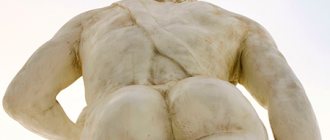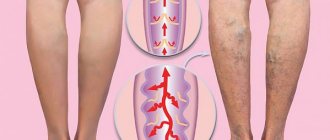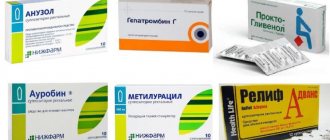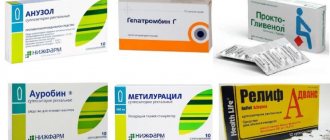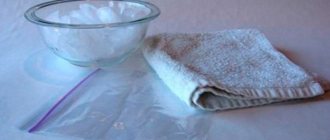Where to begin
When deciding how to get rid of the symptoms of hemorrhoids in the early stages of the process, lifestyle adjustments are recommended:
- Practice regular exercises with an emphasis on the abdominal muscles, buttocks and anal sphincter. Daily walking and reducing the time spent using personal/public transport are required.
- Gentle and gentle water toilet of the anus area after defecation.
- Optimization of diet and regimen taking into account pathology. Regular meals are required 5-6 times a day, including foods rich in fiber in the diet (vegetables in various forms, whole grain cereals, wheat bran, rye bread, crispbread). This helps normalize the consistency of stool and its transit through the intestines. It is necessary to reduce the amount of consumption of spicy, smoked, pickled and sour foods, and alcohol-containing drinks. Nutritional correction is especially important for people suffering from chronic constipation.
- Limiting/reducing monotonous physical activity, if necessary, up to changing jobs.
Indications and contraindications
Direct indications for treatment with a therapeutic agent are pathologies of the rectum of a non-infectious nature, namely:
- external, internal types of hemorrhoids;
- chronic and acute fissures of the anus;
- mechanical injuries, erosive proctitis;
- ulcer or fistula.
Types of hemorrhoids
Stops prolonged itching of various types in the anal area.
The main contraindication is individual intolerance to the ingredients of the drug. It is also prohibited to use candles for:
- high blood pressure;
- paroxysmal tachysystolic disturbances of heart muscle contractions;
- congestive heart failure;
- intracardiac blockades;
- acute functional renal and hepatic impairment;
- thyroid disease – hyperthyroidism;
- inflammation of the pancreas;
simultaneous use with monoamine oxidase inhibitors - Phenelzine, Befol, Moclobemide;- diabetes mellitus;
- venous thromboembolic disease;
- tuberculosis;
- granulocytopenia.
The medication should not be used under 12 years of age. During periods of breastfeeding and pregnancy, it is recommended to consult a gynecologist.
Systemic drugs
Prescribed for the treatment of acute/chronic hemorrhoids during the initial manifestations, as well as to prevent exacerbations of chronic hemorrhoids. This is especially true in the chronic course of the disease or after surgery to excise nodes.
More often, a combined course of phlebotropic (affecting the tone of the veins) drugs is carried out. Their modern types are developed on the basis of flavonoids (substances of plant origin that can influence. They are distinguished by high pharmacological activity and affect various parts of the pathogenesis (development mechanism) of the disease. They also help improve blood microcirculation in the cavernous bodies, normalize the tone of the veins. All this can lead to eliminating inflammation, reducing swelling, normalizing lymph flow.
Contraindications and negative reactions
A contraindication to the use of relief candles is individual intolerance to any components in their composition. Due to the fact that the products contain different substances, it is necessary to read the instructions for use before carrying out treatment.
Relief suppositories are contraindicated for thromboembolism and granulocytopenia. Treatment with elevated sugar levels should be carried out with extreme caution. Conditional contraindications include hypertension, hyperthyroidism, pathologies of the cardiovascular system, and hepatitis. It is not advisable to use relief suppositories during pregnancy and lactation. Suppositories are prescribed only after reaching the age of 12 years.
If contraindications are excluded and the doctor’s recommendations are followed, negative reactions of the body are rarely observed. Sometimes allergic reactions, increased blood pressure and increased heart rate occur. In such cases, you should stop using suppositories and consult a doctor.
Do not use relief candles if the packaging is damaged. This poses a risk of infection. Also, you should not use expired product.
Local treatment of hemorrhoids
It is based on the use of ointments, suppositories, creams with different compositions and indications. They are aimed at certain symptoms of the disease: reducing/eliminating pain, reducing inflammation, stopping bleeding, reducing the manifestations of thrombosis of hemorrhoids. The basis for choosing a medication for the treatment of hemorrhoids is the symptoms that predominate in the patient’s clinical picture (inflammation, pain, itching, bleeding).
So, for severe and frequent pain, local drugs with an analgesic effect are indicated.
In cases of node thrombosis, local medications containing anticoagulants (drugs that slow down blood clotting) are prescribed.
For severe inflammation, combined-action drugs are used, which include painkillers and anti-inflammatory components. They eliminate pain and reduce inflammation.
People often ask whether it is possible to treat hemorrhoids without surgery. Here it should be borne in mind that depending on the degree of the disease, the doctor selects the tactics that the doctor follows when treating hemorrhoids.
Local drug treatment of hemorrhoids involves the widespread use of local drugs with a combined effect. Among these are the preparations in the Relief® line, which are available in the form of suppositories, ointments and creams. The variety of compositions and release forms allows the doctor to choose the best option for the treatment of internal and external hemorrhoids, taking into account the severity of symptoms and clinical form. This will allow you to prescribe treatment for hemorrhoids, taking into account the individual characteristics of the pathological process. The drugs can also be used as a means of maintenance therapy during preparation or as part of rehabilitation after surgical interventions [3, 4].
Peculiarities
Relief suppositories, reviews of which indicate their high effectiveness, belong to the group of drugs used to treat hemorrhoids. Today they are represented by several types of suppositories. Suppositories differ in composition, but all have a pronounced anti-inflammatory, healing and analgesic effect. This allows you to quickly relieve unpleasant symptoms of the disease.
Relief candles are produced in a torpedo shape, which simplifies their use. Suppositories may be white or have a slightly yellowish tint. Since different drugs contain different basic and additional substances, this makes it possible to ensure the effectiveness of the drug in different cases.
Minimally invasive methods [5]
In the absence of the desired effect of conservative treatment (or if necessary), in parallel with it, outpatient minimally invasive methods are widely used. These include:
- Infrared photocoagulation of hemorrhoids. The photocoagulation method involves exposing the tissue of a bleeding node to a focused light flux, causing coagulation. For this purpose, photocoagulators of various types are used, providing the ability to focus the light flux and deliver it through the light guide system to the required area. Effective for bleeding in the initial stages of the disease without/with prolapse of nodes. When deciding how to treat hemorrhoids in advanced cases, it is used as an emergency method to stop bleeding followed by surgical intervention.
- Sclerotherapy. It is based on the introduction of phlebosclerosing drugs into the lumen of the hemorrhoid through a special syringe. Under their influence, the proteins of the membrane of the hemorrhoid are denatured, causing thrombosis with subsequent closure of the lumen. This eliminates the stage of the inflammatory process. The process is carried out under the control of an anoscope with an illuminator. At the same time, the drug can be injected into 1-2 hemorrhoids, since its use in large quantities causes severe pain [6].
- Ligation (ligation) with latex rings. For this purpose, a special device (ligator) is used, which allows placing a ring of latex material on the hemorrhoidal node. Later it is rejected with the formation of a stump and the formation of connective tissue. Usually the result is achieved after 2-3 procedures. This method is used primarily in the treatment of internal hemorrhoids, as well as in patients with concomitant severe somatic diseases.
- THD (transanal hemorrhoidal disarterization method). This is a relatively new method, which is based on suturing various segments and branches of the superior hemorrhoidal artery located under the mucous tissues of the rectum. It is carried out under ultrasound control through an anoscope of a special design, which allows you to accurately determine the location and number of terminal arteries. This is an effective technique that allows you to cure hemorrhoids in patients with stage 2-3 in 90% of cases. Its advantages include the possibility of preserving the entire volume of anal tissue and its minimal trauma. This ensures physiologically normal functioning of the anal canal in the postoperative period [7].
Minimally invasive methods are used in the treatment of hemorrhoids in the first two stages. At the fourth stage, their use is limited and allowed as temporary therapy, if there are contraindications to traditional hemorrhoidectomy. In the absence or low effectiveness of minimally invasive intervention methods, removal (excision) of hemorrhoids with ligation of the vascular pedicles is performed using various techniques. When deciding how to treat hemorrhoids, to reduce tissue trauma, choose a radiofrequency or harmonic scalpel.
Application
Relief candles must be purchased for use in accordance with the instructions contained in the instructions. The drug is an over-the-counter drug, but it should only be used to treat hemorrhoids if recommended by a doctor.
Before using relief candles, you must first carry out hygiene procedures. The recommended dosage is 1 suppository up to 4 times a day. If there are other medical indications, the frequency of use of the drug may be changed.
The optimal time of administration is morning administration. The use of suppositories after bowel movements is also considered effective. The average therapeutic course of treatment is 1-2 weeks. As a rule, with regular use of suppositories during this time, it is possible to achieve a stable therapeutic result and eliminate the unpleasant symptoms of the disease.
How to choose effective therapy
Despite the fact that hemorrhoids are not a life-threatening disease, it is recommended to consult a specialist when the first signs appear. Is there a cure for hemorrhoids? Yes, but the doctor decides which method will be effective and appropriate.
You should not experiment with folk remedies on your own. If hemorrhoids have already been diagnosed, how to treat the disease and whether it is necessary to resort to emergency measures (minimally invasive or traditional operations) the doctor will tell you during the consultation. Only timely started therapy will avoid noticeable inconveniences and complications. Together with preventive measures, this will allow you to lead a full life in the future. How to cure hemorrhoids in your particular case is a question that a proctologist will answer in detail.
- V.K. Kazimirko, M.P. Zakharash, A.I. Poyda, V.I. Maltsev. Pathology of the distal intestine: mechanisms of development, treatment. Kyiv, Morion, 2008.
- Vorobyov, Blagodarny, Shelygin: Hemorrhoids: a guide for doctors. LitTerra, 2010. 200С.
- Zakharash M.P., Poyda 0.1. Dosvіd vikoristannya Relief® and Relief® Advance in the practice of treating coloproctological patients. – 2004. – No. 7. – 18-21.
- M.P.Zakharash, O.I.Poyda. The use of Relief® Ultra and Relief® Advance drugs in the practice of coloproctology department. Clinical surgery. - 2005. No. 10. — 9-12.
- Zagryadsky, E. A. Minimally invasive surgery of hemorrhoidal disease / E. A. Zagryadsky - Moscow: GEOTAR-Media, 2021. - 224 p.
- Khitaryan G.A. et al. The effectiveness of sclerotherapy in combination with ultrasonic cavitation of hemorrhoids and preoperative preparation. Hospital-replacing technologies. 2021. No. 1–2. P.65–66/
- Zagryadsky, E. A. Transanal disarterization in the treatment of hemorrhoidal disease / E. A. Zagryadsky - Moscow: GEOTAR-Media, 2015. - 176 p.
General information about the drug
The antihemorrhoidal drug Relief is a drug of natural origin. It has anti-inflammatory, resorptive hemostatic, immunomodulatory effects. The medication is actively used in proctology.
Forms of release and prices, average in the Russian Federation
The suppository is torpedo-shaped, light yellow or white, contains 40 mg of active substance. There are 6 candles in an aluminum foil package.
Prices in Russia are presented in the table below.
| Name | Number of suppositories (pcs.) | Average price (RUB) |
| Relief | 12 | 419 |
| Relief Advance | 12 | 525 |
| Relief Pro | 12 | 591 |
| Relief Ultra | 12 | 577 |
Composition and pharmacological properties
The active component is phenylephrine hydrochloride. Auxiliary ingredients:
- shark liver oil;
- propyl, methyl ester of para-hydroxybenzoic acid;
- cocoa butter;
- corn starch.
Phenylephrine hydrochloride, the active component of the drug, is an adrenergic stimulant. Its action is reduced to a local vasoconstrictor effect, preventing the marginal accumulation of neutrophils. The action normalizes blood circulation in hemorrhoids, reduces exudate, swelling, serous discharge in various pathologies of the anorectal area.
Forms of release of the drug
The active component included in medications loses its properties under the action of monoamine oxidase and is excreted by the kidneys or as part of the mucus.
In addition to the active component, the drug contains several ingredients that have additional effects:
- Deep sea shark liver oil - squalene, alkylglycerol, vitamins A, E, D strengthen the immune system, increase the number of red blood cells, reduce inflammatory reactions, pain, relieve burning and itching in the anal canal area.
- Phenylephrine is an adrenergic receptor that can constrict arterioles and increase blood pressure at the site of application to the skin. Normalizes hemodynamics, preventing blood from accumulating in hemorrhoids.
Description of the drug - Cocoa butter is a ointment-like liquid that helps in the administration of suppositories. There is an anti-inflammatory effect and reduces the feeling of itching.
- The medicinal component Benzocaine relieves attacks of pain due to its local analgesic effect.
- Zinc salt of sulfuric acid is an antimicrobial and antibacterial agent. It has an astringent, drying, immunomodulatory effect. Helps skin regeneration, relieves signs of inflammation.
- The glucocorticosteroid hydrocortisone acetate reduces inflammatory reactions, swelling, and itching. The vasoconstrictor and anti-allergenic effect reduces the secretion of exudate.
Comparison of drugs:
What is better to use for blood vessels - Actovegin or Cerebrolysin?
